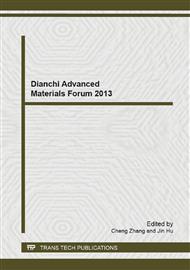p.280
p.286
p.291
p.295
p.301
p.305
p.310
p.317
p.322
Study on Structure and Properties of Porous Copper Alloy
Abstract:
CuSn6Zn6 alloy powder and a pore former were used as raw material. Porous bronze was successfully prepared by the sintering and dissolution process (SDP). The porosity is in range of 76%~88%, and the pore size is in range of 0.8~3.3mm. The effect of the porosity and cell sizes of specimens on its mechanical property was investigated, and the effect of sintering temperature on its relative density and porosity was also studied. The experimental results indicate that under the condition of the same pore size, the compressive strength decreases with the increase of porosity, the compressive strength changes from 10Mpa to 2Mpa with the porosity from 76% to 88%; under the same porosity condition, the compressive strength does not change significantly with the pore size, but it has a slightly increasing trend with the decrease of the pore size. The relative density of the specimens increases with the increase of the sintering temperature.
Info:
Periodical:
Pages:
301-304
Citation:
Online since:
November 2013
Keywords:
Price:
Сopyright:
© 2014 Trans Tech Publications Ltd. All Rights Reserved
Share:
Citation:


